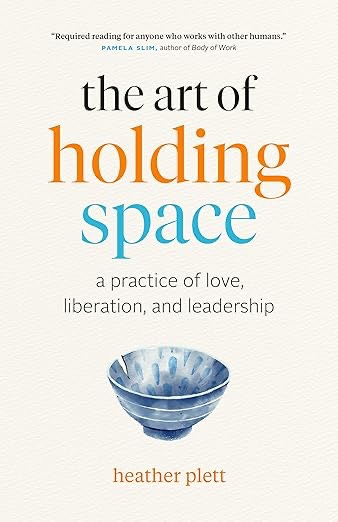Well, it's probably best to rephrase the title to Spaces (Safe spaces, Brave spaces, and Accountable spaces): The Final Frontier.
I’ve been curious about space lately and thought I’d explore a few notions of space. Consider this more of a shallow introduction with links for your ongoing exploration of your spaces.
Creating Space
We’ll begin with Heather Plett’s book—The Art of Holding Space. I’ve had it in my Kindle reading Q for over a year but have bumped it up quite a bit in my current explorations.
The first thing to consider is the notion of—holding space.
To me, that implies—
Holding space for yourself.
Holding space for others.
Envisioning and co-creating the space.
Making it as inclusive as possible.
Internalizing the space into your Agile Coaching Self Mastery skills.
Learning how to close or release the space.
Amongst other aspects.
But I’ll discover more as I dig into Heather’s book. You can explore from Heather here in the Center for Holding Space.
Safe Space
As an Agile Coach, one of the first things I think about regarding space is creating a safe space. One of the challenges for me is that I can’t create such a space for others. I can suggest, model, and encourage, but I can’t create it.
While I understand and embrace the notion of psychological safety and its fundamental importance, saying it is one thing and having it is quite another.
This article explores The Dance Between Safe Spaces and Brace Spaces, which leads to the next space.
Brave Spaces
I first encountered the notion of Brace Space when I saw this LinkedIn post from Mike Edwards where he referenced this poem by Micky ScottBey Jones –
Invitation to Brave Space
Together we will create a brave space
Because there is no such thing as a "safe space"
We exist in the real world
We all carry scars and we all have caused wounds.
In this space
We seek to turn down the volume of the outside world,
We amplify voices that fight to be heard elsewhere,
We call each other to more truth and love,
We have the right to start somewhere and continue to grow.
We have the responsibility to examine what we think we know.
We will not be perfect.
This space will not be perfect.
It will not always be what we wished it to be.
But it will be our brave space together,
And we will work on it side by side.
I was so moved that I immediately incorporated it into my virtual training sessions and agile coaching masterclass.
Here are three additional resources on Brave Spaces—
Creating – https://kapriconsulting.ca/blog/2023/03/21/creating-brave-spaces/
Safe vs. Brave – https://www.linkedin.com/pulse/safe-spaces-vs-brave-lana-hailemariam/
The 6 Pillars of a Brave Space - https://www.ssw.umaryland.edu/media/ssw/field-education/2---The-6-Pillars-of-Brave-Space.pdf
Accountable Spaces
Finally, in this article, Elise Ahenkorah explores all three spaces but leans heavily into the value of an accountable space.
Her tone is snarky and diminishing towards the first two spaces, but her ideas are worth considering in our space exploration.
Wrapping Up
In writing this article, I aimed to widen your awareness of your role as an Agile Coach in creating and holding space.
I want to have you reflect more on what you can and can’t influence in shaping your personal space, coaching client space, and organizational space.
It’s funny; I often couple space with my coaching self-mastery and presence awareness. So, this journey has widened my understanding of space.
Stay agile, my friends,
Bob.
It’s a challenging time for Agile Coaches, Scrum Masters, and Change Agents. But the profession isn’t dying. It’s simply realigning around coaches with the chops, depth & breadth of experience, and skills to deliver value.
Please consider joining Peter Fischbach and me for our next Badass Agile Coaching Masterclass, beginning January 29th, 2025. Now is the time to raise your Agile Coaching competencies; there is no better way than our class.
We have significant DEI discounts available, so DM bob@rgalen.com for more info.




